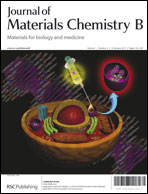Bioengineering approaches have been intensively applied to create small diameter vascular grafts using artificial materials. However, a fully successful, high performing and anti-thrombogenic structure has not been achieved yet. In this study, we present the first step of a process aiming at biofunctionalizing previously designed compliant polyethylene terephthalate (PET) scaffolds (Moreno et al., 2011). The main challenge of such a surface modification is to prevent the bulk polymer from any damage, so that it preserves the mechanical properties that the structures have been designed for. In that endeavor, an aminated long-chain polymer (polyvinylamine, PVAm) was used as an aminolysis reagent to get amine (–NH2) moieties only on the very surface of PET. Different reaction conditions were assayed, leading to a large range of amino group densities associated with slight variations of the planar tensile properties. These results were in stark contrast with those generated with a common small diamine substrate (ethylenediamine, EtDA), as the latter yielded a strong degradation of the mechanical properties for comparable amine densities. Tubular mechanical assays were then carried out on PVAm-functionalized PET scaffolds. The latter showed a compliance match with arteries under the chosen reaction conditions, as initially observed for pristine PET tubular scaffolds.

You have access to this article
 Please wait while we load your content...
Something went wrong. Try again?
Please wait while we load your content...
Something went wrong. Try again?


 Please wait while we load your content...
Please wait while we load your content...